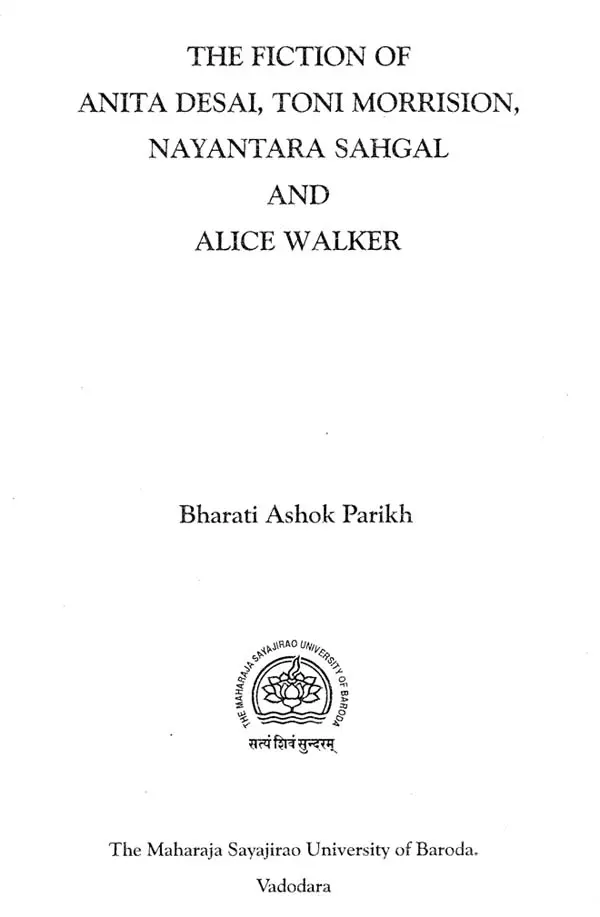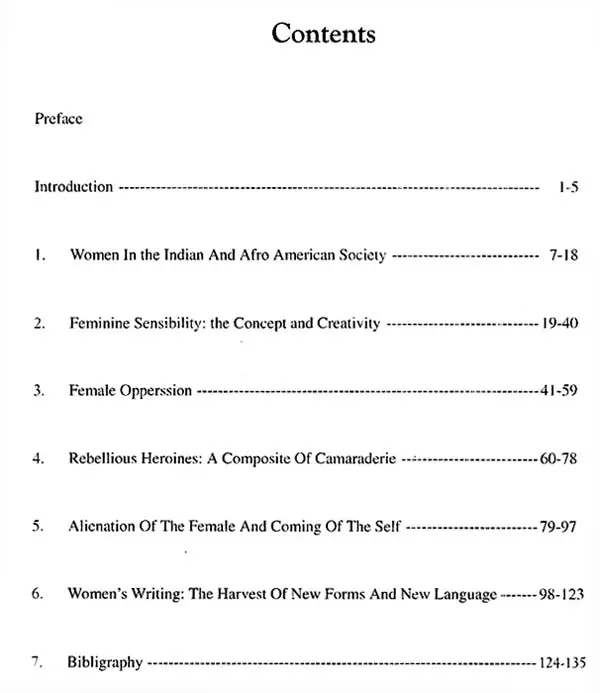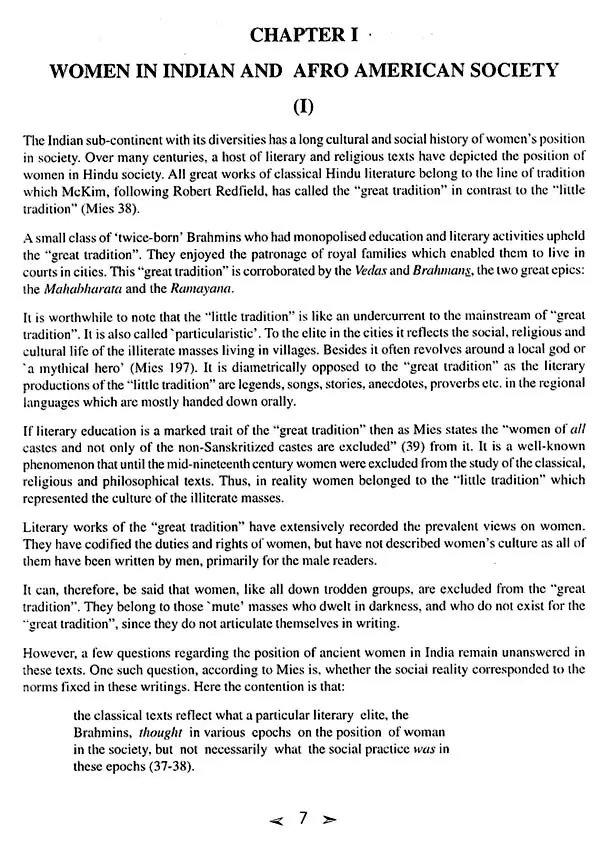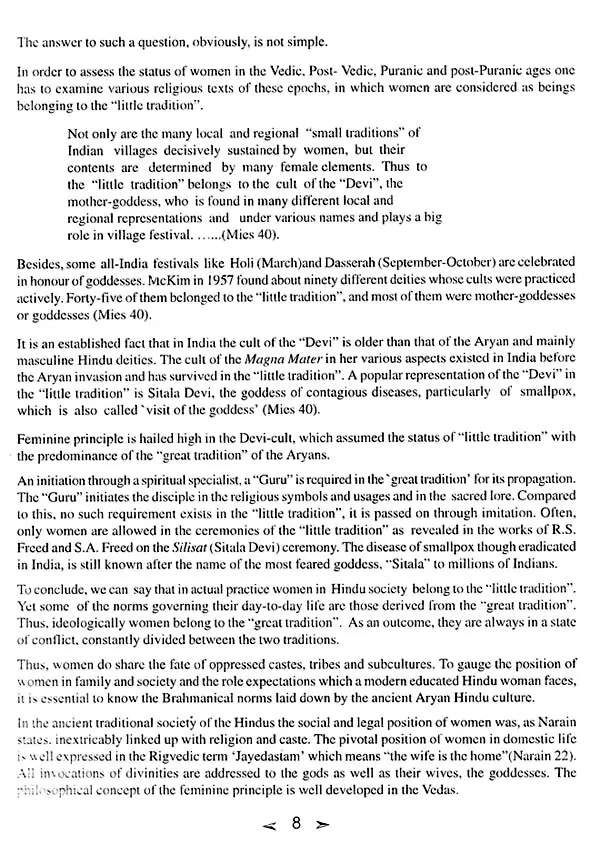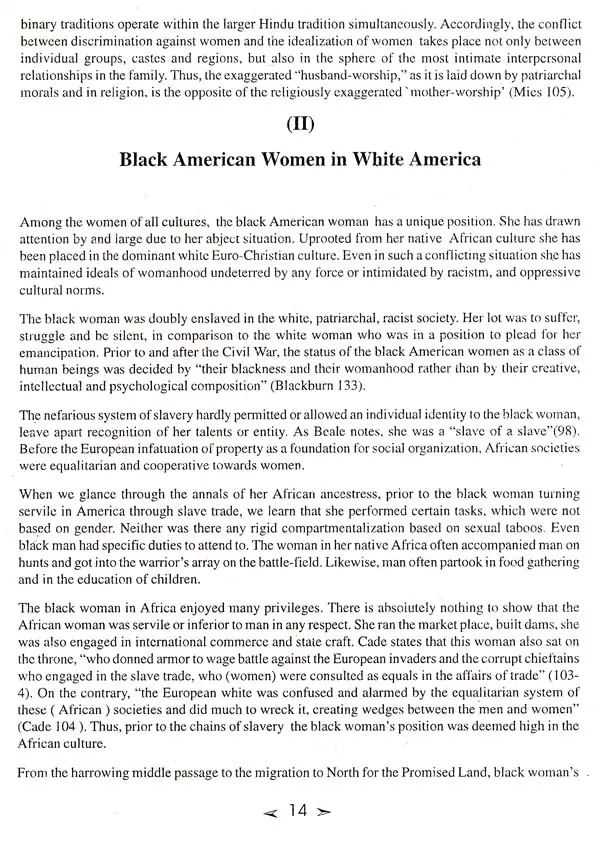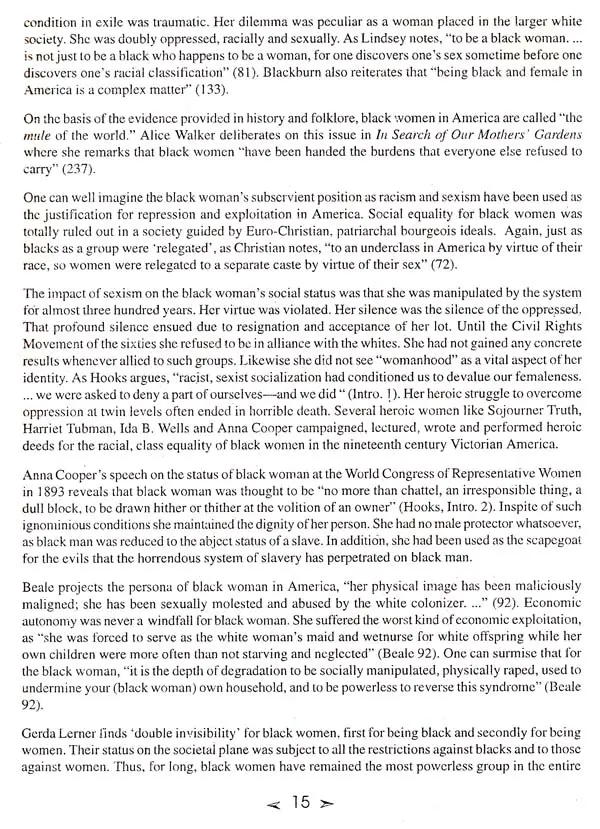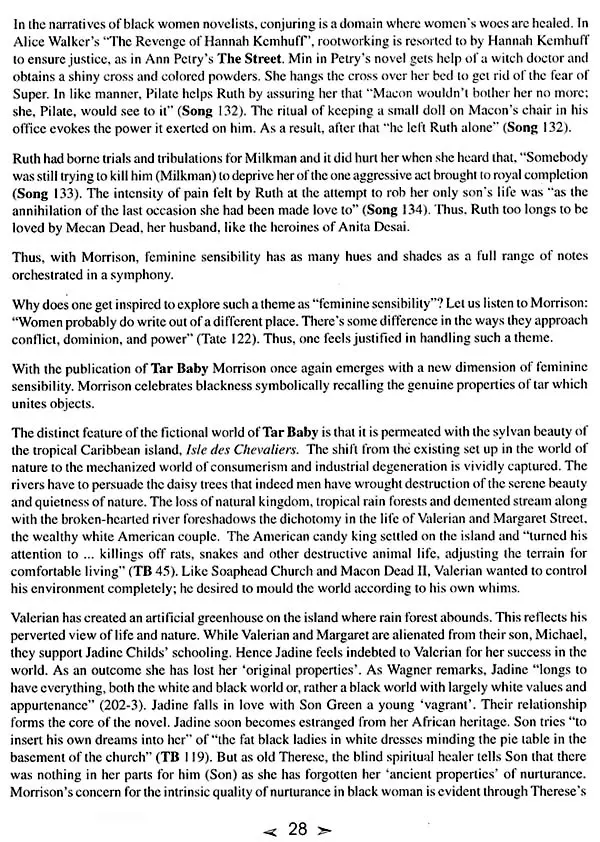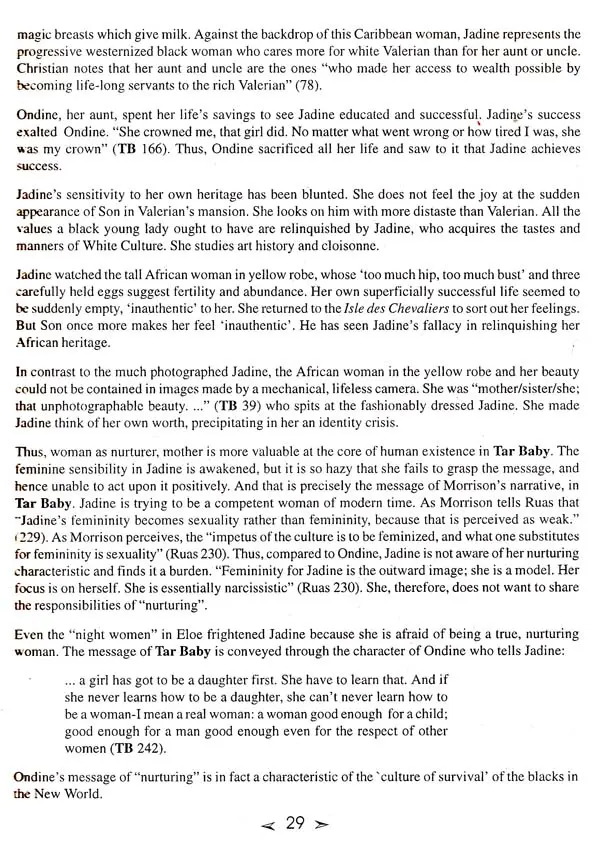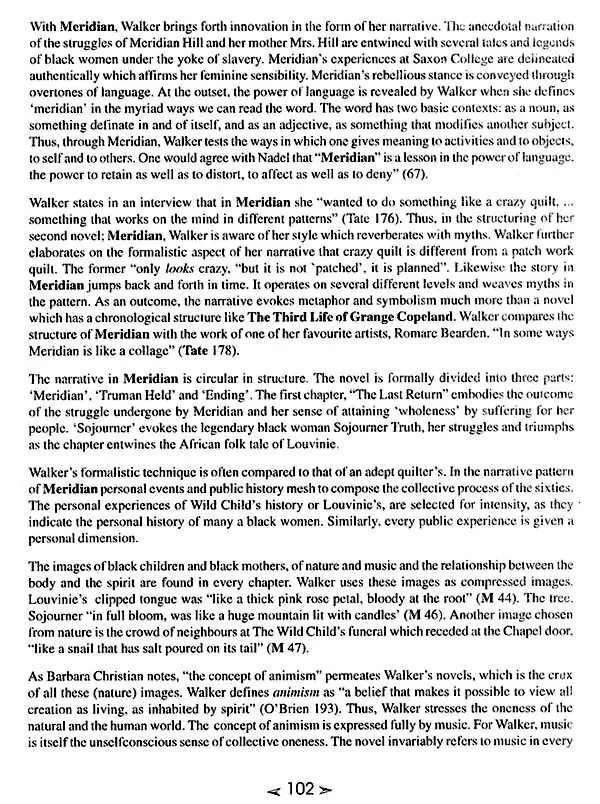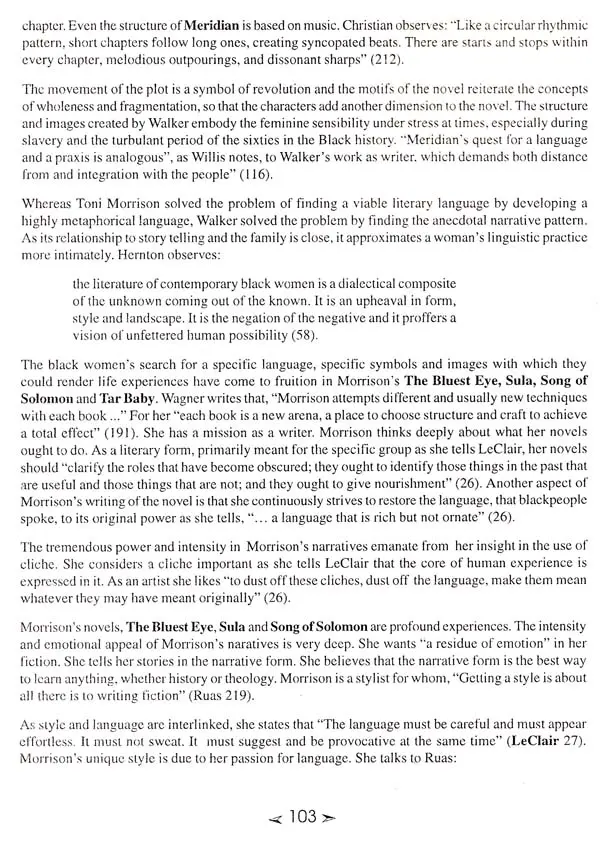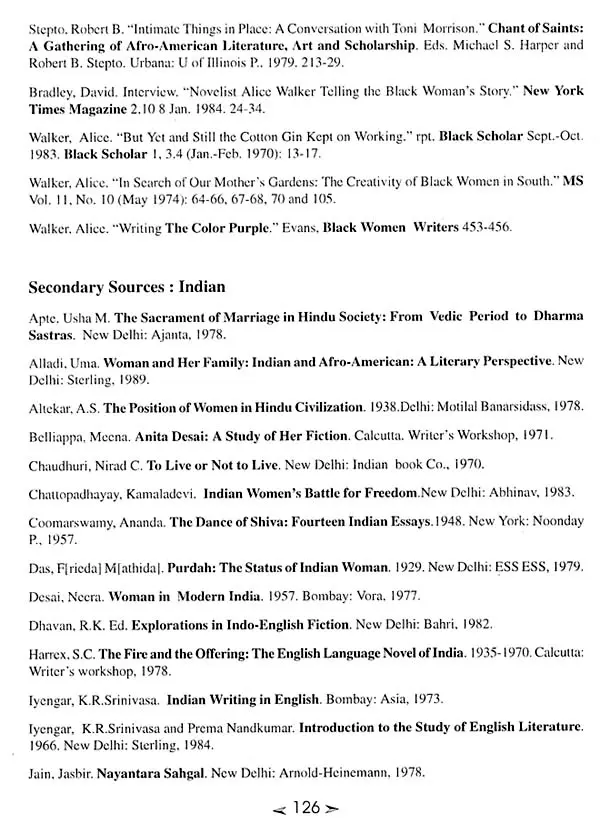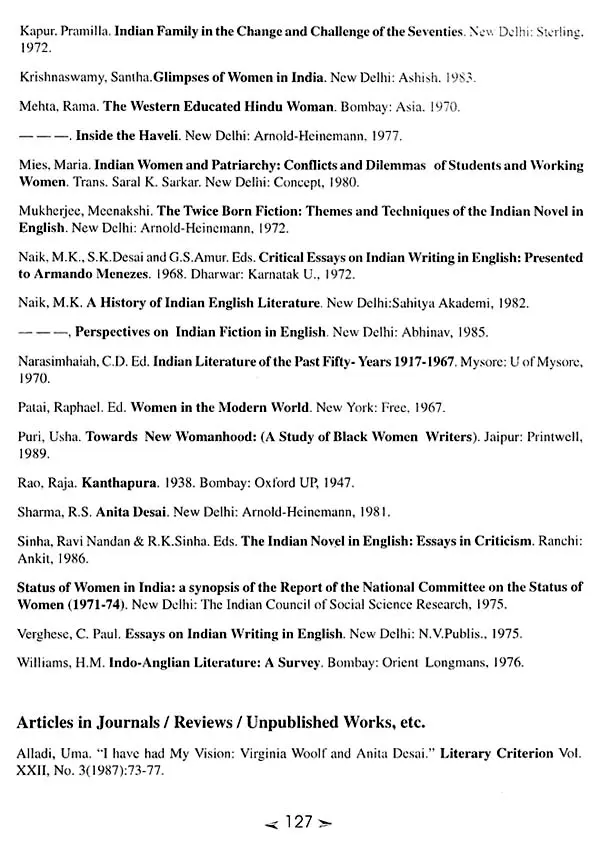
The Fiction Of Anita Desai, Toni Morrision, Nayantara Sahgal And Alice Walker
Book Specification
| Item Code: | UAQ688 |
| Author: | Bharati Ashok Parikh |
| Publisher: | The Mahraja Siyajirao University of Barodra |
| Language: | English |
| Pages: | 135 |
| Cover: | PAPERBACK |
| Other Details | 9.70 X 7.50 inch |
| Weight | 220 gm |
Book Description
The questions concerning women have always inspired me to discuss them in the way women have attempted to define and discuss motion he were a women. I think, first raises such questions and then attempts to answer them practically. Raising such questions without the crutches of ligh theory, which attempts to homogenizerce, gender, Mix and even nation, am aware, is difficult. It has become all the more difficult when literature is being used as fodder to flame all the controversies generated by such special interest groups as: feminists, lesbians, gays and others who read, Interature through their microscopic point of view.
This book is an attempt to read women's fiction about women from a broadly defined concept, which I have called "feminine sensibility" which is shared by the Indian and the Afro-American women novelists and their protagonists. These women are sensitive human beings gauging the social reality around them. The lens through which they look at the world is tinted with a peculiar sensibility, and a heightened sense of perception, which acts as a catalyst in charting the oscillograph of women's inner lives. Primarily, it is that feeling which differentiates the female from the male in the sphere of emotions; as women are more involved with human kinship.
The portrayal of women in the Afro-American fiction by Morrison and Walker on the one hand, and the depiction of Indian women by novelists like Desai and Sahgal inspired me to take up the study. How the traditional society treats women on the one hand and how the class and recentrenched, racist society perceives women is an important issue, which attracted my attention in this field of scholarship.
With the award of the Nobel Prize in Literature to Toni Morrison in 1993, I feel much enthused to write on her fiction. Her conviction, and her commitment to black people and their culture are high watermark of all her "narratives'. Alice Walker with her unforgettable narratives, her suffering and liberating heroines, is one of the few courageous writers who inspire women all around the globe to defy exploitation. Anita Desai is an artist who is always on the forefront representing the least at tended women characters. Her heroines evolve through various stages beginning with gilts and women with strained relationships with their husbands, and in-laws, to harassed mother and single triumphant women in Indian society. Nayantara Sahgal, the doyan of political novel in Indian English fiction, provokes and provides many a fire-brand, honest and challenging heroines in her novels. Her cosmopolitanism makes us sensitive to various issues not raised by many fiction writers as early as Sahgal.
This book is the result of the encouragement, help, support and kindness of many people and institutions over a period of more than a decade. I wish to thank everyone who has helped me complete this work.
At its earliest stages Professor J. Birje-Patil provided the germination of this research idea. The idea of "feminine sensibility' came to me quite early during my study of Sanskrit Literature, as well as my reading of Gujarati Translations of Sharadchandra Chatterjee's novels and a vast body of Gujarati Literature. The professional support, guidance and help provided by Professor O. P. Joneja needs a special thanks. The generous grants provided by The American Studies Research Center, Hyderabad and the encouragement provided by Professor Issac Sequiera and Director Dr. J.W. Bjorkman gave me a great confidence and support. Likewise the American Center Library, Mumbai, for their unstinting help and co-operation for the two decades is acknowledged with a sense of gratitude. I thank Indian Institute of Advanced Study, Shimla for awarding me Associateship for three months for the years 2001, 2002, 2003.
I am thankful to the staff of Smt. Hansa Metha Library at The M. S. University of Baroda for provid ing me with research material and books throughout my research work. I wish to put on record my sense of greatfulness to Dr. Pratima Desai, the Development Officer as well as the Committee for the Unassigned Grants for the publication of scholarly works for the Year 2001-02, The M. S. University of Baroda for allocating me the funds for publication of this book.
I thank Shri Pulin Banatwala, for his unstinting help in preparing the final draft of the book. I am thankful to Shri. P. N. Srivastava, Manager, The M.S. University of Baroda Press for printing and The Maharaja Sayajirao University of Baroda for publishing the book.
Finally, I thank my husband Dr. Ashok Parikh who has always shown a great zeal for my work and supported me with his patience, affection and understanding during the long period of my research. Our daughter, Mudita and son, Aditya have proved too supportive in all my endeavors. Their contribution cannot be measured or described in words.
The novelists in this study share the female space in two ways first because they are all women writers and secondly because they write about women. The main characters in their novels obviously are women. These women are sensitive human beings gauging the social reality around them. The lens through which they look at the world is tinted with a peculiar sensibility which I have called "feminine sensibility", a heightened sense of perception which acts as a catalyst in charting the ascillograph of woman's inner life, Feminine sensibility, though contributory to the making of feminism. is not feminism per se. Primarily, it is that feeling which differentiates the female from the male in the sphere of emotions, as women are more involved with human kinship. To them emotional bindings are more fulfilling than to men as men's emotional needs may not be as intense as those of women's Similarly, remembrance of things past also occupies, a large territory of the female space. Writing of diaries, journals and private fictions, preservation of family histories, and legends, narration of folk tales in the privacy of a hearth has been primarily a female territory since time immemorial Of all the human emotions, love is supposed to be the governing factor of the feminine psyche. It could therefore be called the moving spirit behind feminine sensibility, which revolves round the family nexus and human relationships; the two territories of the female space inhabited by almost all the characters in the novels under study.
To give a historical perspective, this study in the first chapter presents an account of the status of the women in Indian and American societies. With the help of a host of literary and religious texts from the Vedic ages to the present, the study identifies two traditions in India-the great tradition" of the twice-born Brahmins and the "little tradition" of the non-Brahmin castes. As the great tradition was essentially literate and elitist in nature, it excluded women from its discourse. Hence, women in ancient and medieval India (except the Vedic or Pre Vedic India) have always belonged to the little tradition, which has denied them the status given to the Brahmins and the upper caste males. The cult of the Devi, though a part of "little tradition", gives spiritual status to women, but it does not give them a socio-economic status. As the feminine principle is held high in the Devi-cult, the woman is supposed to have a high social status, but the denial of socio-economic freedom pushes her to variably in the "little tradition" even when she is born a Brahmin, Consequently, the woman is always in a state of conflict, constantly divided between the two traditions.
The Afro American women live in the doubly enslaved white, patriarchal racist society. Their lot is to suffer, struggle and be silent. Black American woman called "the mule of the world" has the status of the wretched of the earth. Extending the thesis of the great and the little Indian traditions to black American society, the black American women can be placed in the "little tradition" which belittled their status below that of a male slave. Doubly oppressed in a racist society, the black American woman, like their Indian counterpart have maintained a tradition of tolerance, patience and persistence. This tradition of a passive resistance to male oppression developed by Indian women over a long period of time forms the basis of the feminine sensibility.
